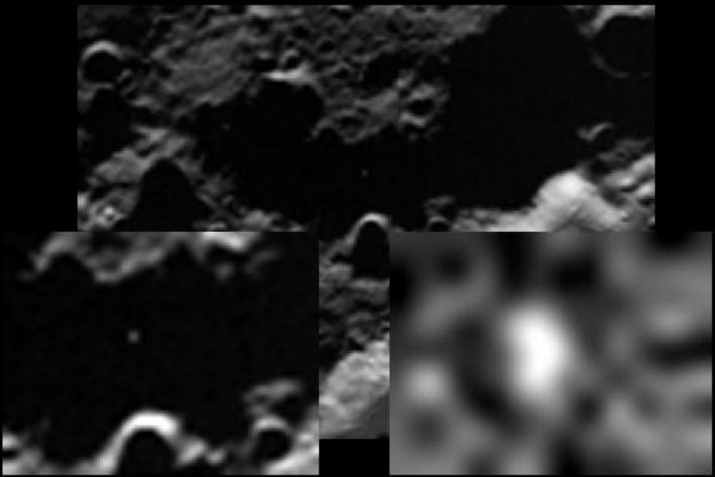By Wes O’Donnell
Managing Editor of In Military, InCyberDefense and In Space News.
This week in 2009, on June 18, NASA launched the Lunar Crater Observation and Sensing Satellite (LCROSS) together with the Lunar Reconnaissance Orbiter (LRO) from Cape Canaveral launch pad SLC-41.
Together, they made up the Lunar Precursor Robotic Program, the first American mission to the Moon in over 10 years.
Get started on your Space Studies Degree at American Military University. |
LRO was designed to orbit the Moon and provide detailed mapping for identifying safe landing sites, locating potential resources on the Moon, characterizing the radiation environment, and demonstrating new technologies.
And while LRO still orbits the Moon today, LCROSS was designed to intentionally crash into the Moon’s surface to explore the presence of water in the form of ice in a permanently shadowed crater near a lunar polar region.
LCROSS was successful in confirming water in the southern lunar crater Cabeus.

In the image above, this mid-infra-red image was taken in the last minutes of the LCROSS flight mission to the Moon. The small white spot (enlarged in the insets) seen within the dark shadow of lunar crater walls is the initial flash created by the impact of a spent Centaur upper stage rocket. Traveling at 1.5 miles per second, the Centaur rocket hit the lunar surface, followed a few minutes later by the shepherding LCROSS spacecraft. Earthbound observatories have reported capturing both impacts. But before crashing into the lunar surface itself, the LCROSS spacecraft’s instrumentation successfully recorded close-up the details of the rocket stage impact, the resulting crater, and debris cloud. In the coming weeks, data from the challenging mission will be used to search for signs of water in the lunar material blasted from the surface.
According to NASA, “The two missions were designed to work together, and support from LRO was critical to the success of LCROSS. During impact, LRO, which is normally looking at the lunar surface, was tilted toward the horizon so it could observe the plume. Shortly after the probe hit the Moon, LRO flew past debris and gas from the impact while its instruments collected data.”
10 years ago #OTD I entered lunar orbit! Since then, I’ve orbited the Moon over 40,000 times. Here’s a few highlights of what I’ve learned. pic.twitter.com/w0zMZAXegz
— NASA’s Lunar Reconnaissance Orbiter (@LRO_NASA) June 24, 2019
Some of the LRO exploration and science results (data from NASA):
- In polar shadowed regions found the coldest spots measured (below 30 K) in the solar system
- Discovered significant subsurface hydrogen deposits in regions cold enough for water ice to survive, as well as in additional hydrogen deposits in warmer areas where surface water ice is not thermally stable
- Measured surprising amounts of several volatiles (e.g.,CO, H2, and Hg) in the gaseous cloud released from Cabeus by the LCROSS impact
- New (<5 years old) impact craters and are found to be widespread across the lunar surface, with a surprising abundance of related surface changes
- Developed an improved catalogue of lunar craters larger than 20 km in diameter, thus providing constraints on the ancient impactor population that affected the inner solar system
- First radar measurements of the lunar far side
- Improved the age dating of small landforms by using crater counts from the new high-resolution images
- Discovered that the Moon is in a general state of relatively recent (<1 Ga) contraction
- Characterized relatively young volcanic complexes, such as Ina, and revealed first direct evidence of the presence of highly silicic volcanic rocks on the Moon
- Measured galactic cosmic ray interactions with the Moon during a period with the largest cosmic ray intensities observed during the space age
- Mapped in detail the temperatures, UV reflectance, and near-surface hydrogen abundance of the moon’s polar cold traps
- Created the first cosmic ray albedo proton map of the Moon
- Made high-resolution images of robotic and human exploration sites that showed hardware, the tracks of the astronauts, and surface disturbances from landing and ascent

Comments are closed.